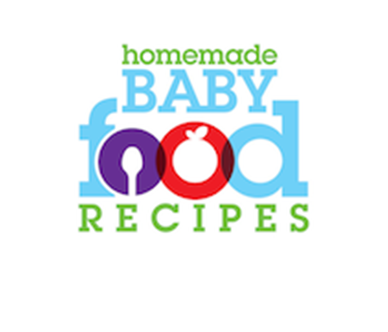Introducing Solid Foods To A Baby With Reflux
Updated: July 17, 2023
Introducing solid foods to a baby with reflux can feel daunting, especially if you feel you’ve just started to get baby’s flare-ups under control.
These tips will help minimize the problems that transitioning to solid foods may cause.
IMPORTANT NOTE: The information presented here is meant as a guide and does not replace professional medical advice.
If you are concerned that your baby is displaying symptoms of infant reflux, or if you are introducing solid foods to a baby with reflux for the first time, you should always consult your child’s doctor.
Share your infant reflux tips and read tips from other visitors
What is infant reflux?
Reflux is a condition where the contents of the stomach reflux into the esophagus, causing discomfort or pain.
A more complicated form of the condition is Infant Gastroesophageal Reflux Disease (or Pediatric GERD).
It is believed that approximately 50% of babies are born with some degree of infant reflux. Unfortunately, it is often mis-diagnosed as colic.
This can mean that many miserable months may go by before some babies receive the treatment, or simple feeding modifications, they need.
SYMPTOMS OF INFANT REFLUX INCLUDE
- colic-like symptoms
- frequent crying – sometimes persistent, sometimes sudden
- vomiting or spitting up
- irritability
- arching of back/neck during or after feeds
- frequent hiccups
- frequent waking – seeming inability to sleep for long periods
- frequent ear infections
SYMPTOMS OF GERD INCLUDE
- aversion to food and general oral aversion
- refusing to eat, or eating very little, even when hungry
- anaemia
- runny nose
- frequent sinus infections
- excessive drooling
- difficulty in swallowing or gagging when eating
- persistent sore throat/hoarse voice
- apnea (stopping breathing for at least 20 secs)
- persistent ear infections
- wheezing, asthma and other respiratory problems
- weight loss or failure to thrive
- bad breath
- arching of back/neck during or after meals
- baby gagging himself with his fingers
Most children grow out of their infant reflux by the age of 2 – in fact, many parents notice an improvement when solid foods are introduced.
Sadly, though, this isn’t always the case and – for some babies – reflux can be a persistent condition.
Which foods should I try first?
Whilst it would be wonderful to have a list of foods that are well tolerated by babies with reflux, the reality is that every baby is different… and so are their reactions to different foods.
The pattern of introduction of solid foods to babies WITHOUT reflux is normally cereal–veggies–fruits, beginning at 6 months of age (see baby’s first foods for more detailed guidelines).
However, some doctors recommend using cereal to thicken the formula or expressed breastmilk of a baby with reflux BEFORE the age of 6 months, in an attempt to “keep the milk down”.
Whilst there is not a huge amount of evidence that this really helps, doctors often prefer parents to try this before prescribing any kind of medication.
Alternatively, many doctors will recommend that babies with reflux start solid foods earlier than is considered necessary for their “non-reflux” peers.
Our guide to introducing solids at 4 to 6 months
From our blog…
Although rice cereal is commonly suggested as a first food, it doesn’t HAVE to be the first food you offer your baby –
while one baby with reflux may be able to tolerate it well, it may cause a flare up in another.
Rice cereal can also contribute to excess gas/wind and constipation – additional discomforts your baby could well do without!
Instead, with the consent of your child’s doctor, you could try veggies or fruits first – (see our pureed baby food recipes for some ideas) – or you could try oatmeal instead of rice cereal.
On introducing solid foods to a baby with reflux, many parents find that some fruits and juices – particularly oranges, apples, rhubarb and bananas – can make the pain worse.
Tomatoes and tomato juice are also commonly responsible for flare-ups.
Pears are the least acidic fruit and may be the best fruit to try first.
Pear baby food recipes, guidelines and tips
OTHER FOODS WHICH MAY WORSEN REFLUX SYMPTOMS
Foods that cause a lot of burping can aggravate the pain of reflux. For this reason, it’s a good idea to avoid…
- onion
- garlic
- broccoli
- cucumber
- brussel sprouts
- cabbage
- cauliflower
- corn
The following foods (which may not all be suitable for very young babies) are also notorious for triggering reflux flare ups:
- pineapple
- whole milk, flavoured milk or foods prepared with whole milk
- high fat foods, including fatty meat and chicken skin
- bacon
- sausages
- creamy soups
- creamed vegetables
- carbonated drinks
It is very important that you follow the four day rule when introducing solid foods to a baby with reflux, so that you are able to quickly identify which foods trigger a flare-up in your baby.
Doctors usually recommend introducing foods with a fairly thick consistency, as it is felt that these “stay down” better and provide your baby with more calories.
But parents of some babies with severe oral aversion (unwillingness to eat) find that they have more success with thinly pureed foods.
It seems that the key is to experiment a little, under your doctor’s supervision, to see what works best for your child and to ensure that the food you give is smooth.
Gagging on lumps often worsens reflux.
To create a suitable texture for YOUR baby, check out our tips on how to thicken or thin baby food purees.
Tips for successful feeding
- Try giving your baby small meals on a frequent basis, rather than a few “main” meals.
- Avoid feeding your baby in the last hour or two before bedtime, to minimise night-time discomfort and waking.
- Prop your baby’s bed to an angle of around 30 degrees.
The easiest way to do this is to securely place the legs of the bed on blocks. Alternatively, raise the mattress itself – special wedges are available for this purpose. The mattress should always be flat – if it is bent, it can cause your baby to “bend” in the middle, worsening the problem. - Keep your baby upright for at least 20 mins after feeding – try holding him against your shoulder, or place him on a raised bed.
- Don’t put your baby in an infant seat after feeding – this causes slouching, which can worsen reflux.
- Bathe your baby or change his nappy/diaper BEFORE feeding, or at least 2 hours afterwards.
- When changing his nappy, prop your baby’s head on a pillow.
Don’t fasten his nappy too tightly around his abdomen and avoid tight clothing. - Door bouncers, baby walkers and other equipment designed to keep baby upright before he can stand tend to press on the abdomen and are best avoided if your baby has reflux.
- Consider using infant massage, which aids digestion and can ease the symptoms of infant reflux.
- Think about offering your baby a pacifier/dummy.
This encourages sucking, which increases the amount of saliva your baby produces.
The alkaline properties of saliva can neutralize the acid coming up, reducing your baby’s discomfort.
Difficulties in feeding
Typically, when a baby refuses to eat or is fussy at mealtimes, parents are advised that – as long as their babies are gaining weight – then there is no cause for concern…
He’ll eat when he’s hungry!
However, a baby with acid reflux may find it uncomfortable – or downright painful – to eat and will either refuse foods even when he IS hungry, or will vomit excessively.
This can lead to weight loss or failure to thrive and is a serious situation requiring supervision by a pediatrician. In extreme cases, feeding by tube may be required.
If you are concerned that your baby’s reluctance to eat may be caused by reflux, it is essential that you discuss your concerns with your child’s doctor.
Baby feeding problems – general tips for all parents of “fussy feeders”!
High calorie foods
If your baby is only able to eat small amounts, then it is often recommended that the foods you DO offer are high in calories.
With your doctor’s consent, try:
- Cooked egg yolk. It is great for thickening purees or soups and can be easily added to most foods.
- Wheat germ. An excellent addition to any baby’s diet, you can sprinkle it over pureed fruits and veggies or cereal.
(Read more about the benefits of wheat germ in your baby’s diet). - Avocado. A popular first food, avocado can be mashed and served alone, or – for older babies – can be mashed and served as as a dip with finger foods.
(Click here for lots more avocado baby food information and recipes). - Cheese. There are lots of ways you can incorporate cheese into your baby’s diet – try mixing grated cheese into mashed potatoes, purees or pasta.
For older babies, try fingers of melted cheese on toast.
You can also offer your baby cream cheese, either spread on bread or as a dip for fruits and vegetables.
See our cheese information and guide to introducing dairy for more information.
Sources and external links for more information
Infant Acid Reflux – by the Mayo Clinic
Symptoms of GERD In Infants and Children
La Leche League - Breastfeeding and Reflux


